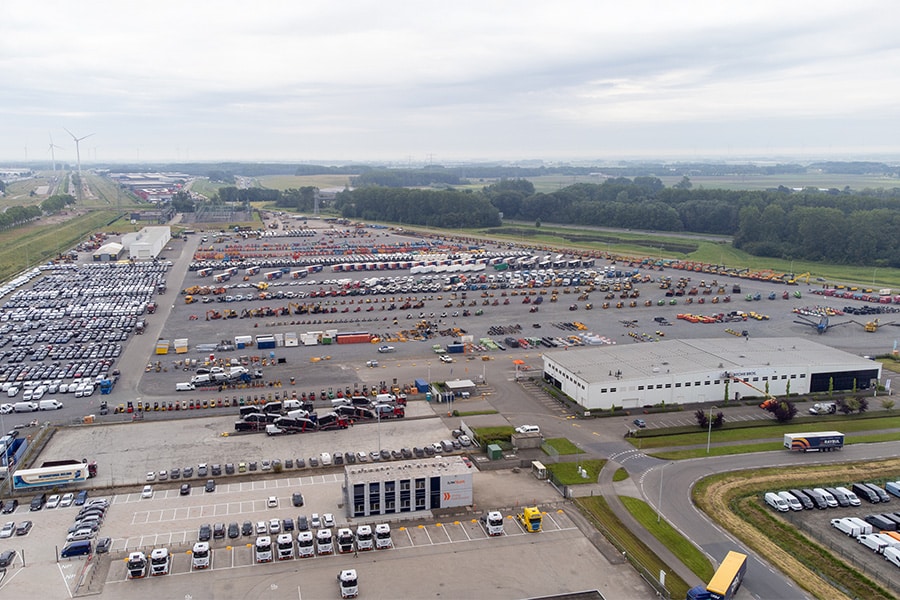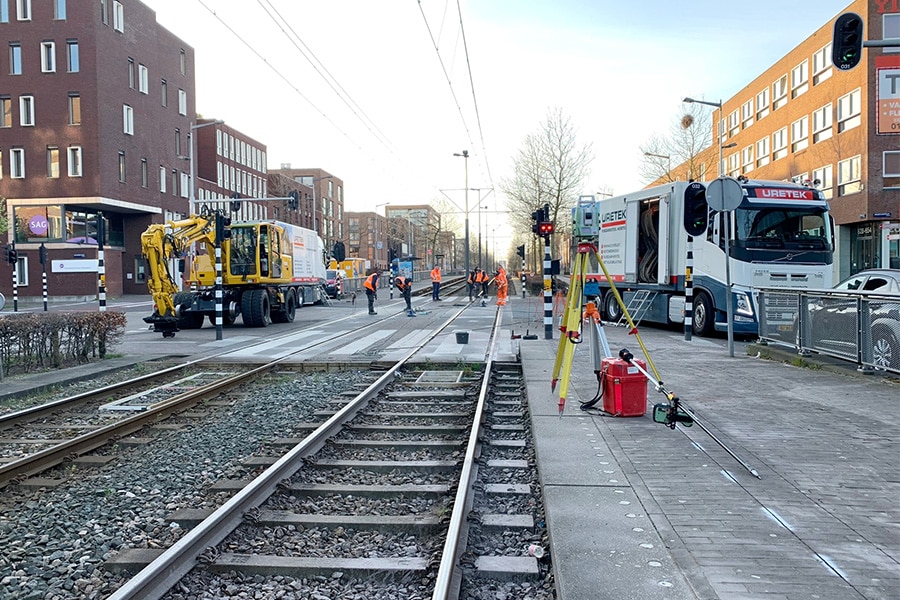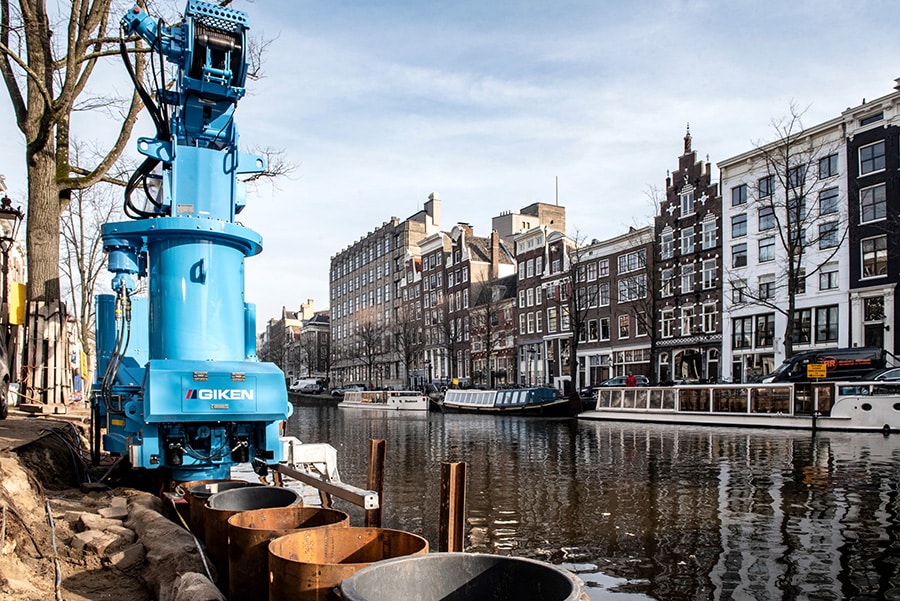
Renovation Afsluitdijk is signboard for the rest of the world
On May 28, 1932, the last hole in the Afsluitdijk was closed. The flood barrier between North Holland and Friesland, closing off the IJsselmeer from the Wadden Sea was created as part of the Zuiderzee Works to protect the Netherlands from flooding.
The original design of the Afsluitdijk came from engineer Cornelis Lely, who was a member of the Zuiderzee Association at the time. He designed the original plan for closing off and reclaiming the Zuiderzee as early as 1891. The actual construction of the Afsluitdijk began in 1927. Now, in 2019, the Afsluitdijk is undergoing large-scale renovation so that future generations will also be safely protected from flooding, taking into account changing climate conditions. The work is in the hands of construction consortium (BAM, Van Oord and Rebel) Levvel "Lely's Heritage Secured." We speak at Levvel's offices with Carlo Kuiper, Project Director SPC and with Carlos Mollet, Project Director EPC and MTC. The gentlemen are from BAM and Van Oord, respectively.
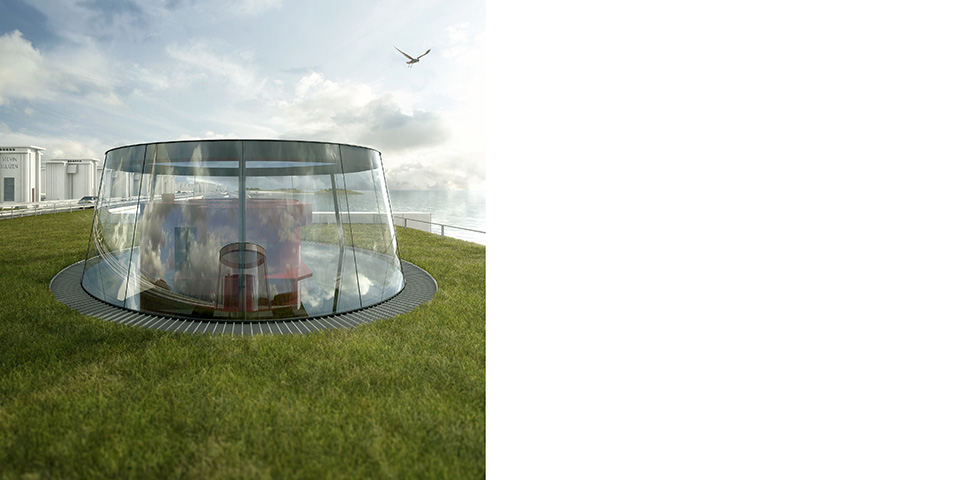
Den Oever sluice and pump complex.
This is the time
When asked why the Afsluitdijk needs to be renovated, Mollet replied, "The dike has been protecting the Netherlands from flooding for almost 90 years now, but it no longer meets current water safety standards and has been condemned. The proposed renovation must provide protection against a storm that occurs once every 10,000 years. In addition, more water must be able to be drained from the IJsselmeer into the Wadden Sea. Due to changing climate conditions, more water from the rivers enters the IJsselmeer in peaks. This water must be drained through the existing sluices in the Afsluitdijk into the Wadden Sea. As the sea level rises, the time to discharge is getting shorter and shorter. Therefore, 8 additional sluice gates and 2 large pumping stations are being built. These pumping stations each have 3 pumps with a diameter of 4.65 meters. The pumps can discharge water under all conditions."
Working with the store open
"The work of construction consortium Levvel is taking place under DBFM contract, commissioned by Rijkswaterstaat. That means that we as construction companies take care of the pre-financing and Rijkswaterstaat pays once the infrastructure is available," Kuiper says. "The Special Purpose Company (SPC) attracts financiers. The SPC consists of shareholders BAM with PGGM, Van Oord with Aberdeen Standard Investments and Rebel with EPICO. The SPC then contracts out the work to an EPC (Engineering, Procurement and Construct). BAM and Van Oord together form the EPC and the MTC (Maintenance Term Company), each participating for 50% in a fully integrated combination."
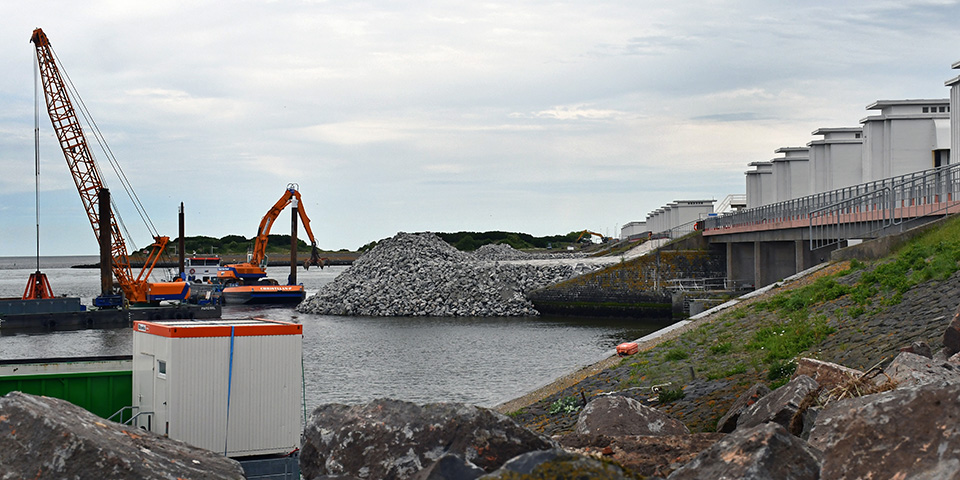
Work at Den Oever, May 2019.
The contract with the Department of Public Works was signed on April 25, 2018. "Oct. 12, 2018 was the official start date," Kuiper explains. "That was when we took over the maintenance of the Afsluitdijk." Mollet adds: "We work with the store open. All the locks and bridges have to keep running as much as possible, and so for that we have a maintenance organization that will maintain all the assets in the contract from October 12, 2018. It's not just 'building inside the fence' here, we're talking about quite a maintenance organization. When the construction phase is completed on December 31, 2022, a 25-year maintenance period will follow (through 2048)." Old contract forms still sometimes create an obstacle course when it comes to innovative solutions. That is precisely where Mollet wants to give kudos to the Department of Public Works in this case: "The team at the Department of Public Works really stuck its neck out to write a contract with functional specifications, rather than mere regulations. That makes it possible to respond innovatively to the request. The renovation of the Afsluitdijk can be seen as the showcase of hydraulic engineering for the rest of the world."
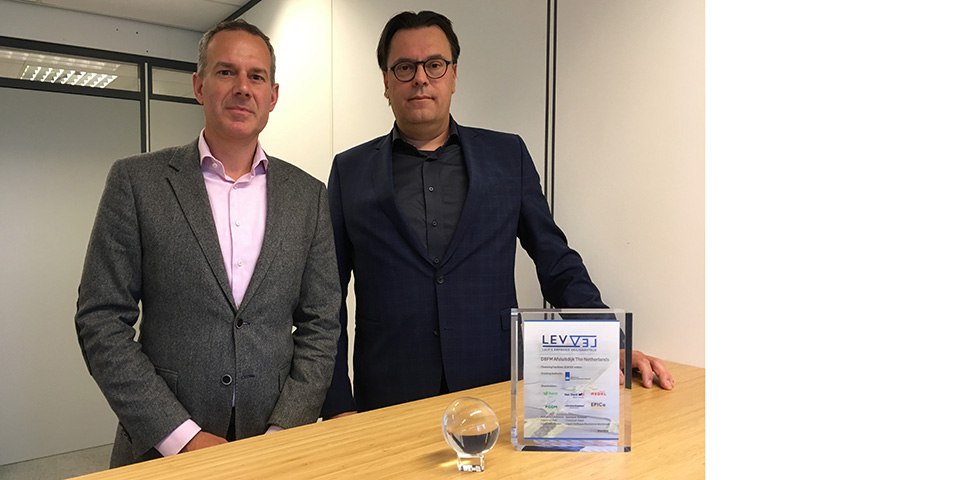
Carlo Kuiper (left), Project Director SPC and Carlos Mollet, Project Director EPC and MTC.
Afsluitdijk energy neutral
Rijkswaterstaat has set the requirement to make the Afsluitdijk energy neutral.
Mollet: "Six new pumps will be installed, the size of a house. The pumps we are using are fish-friendly and also energy-efficient. There will also be additional sluice gates, so there will be more natural water drainage. We can discharge 235 cubic meters per second per pump, but because of the additional sluices that construction consortium Levvel included in the plan, only 10% of energy is needed compared to the reference design. So sluicing when we can, pumping when we have to."
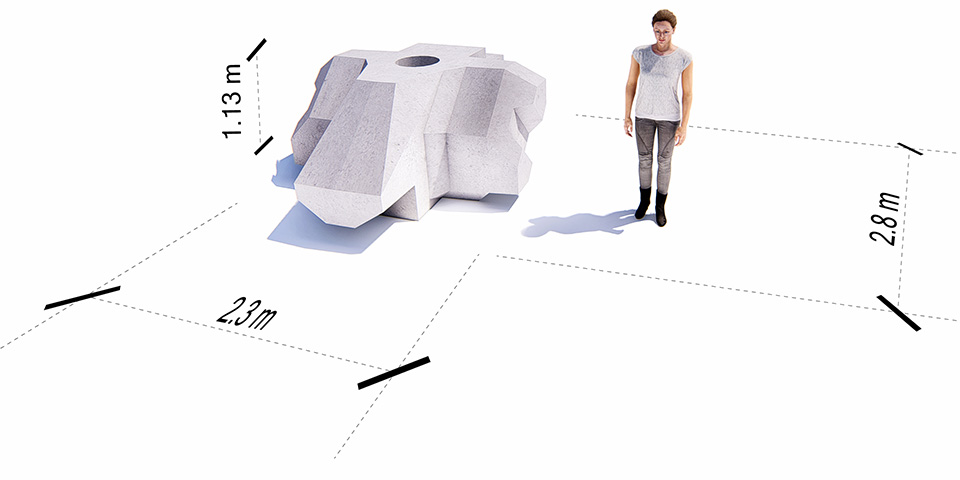
Ratios vn the Levvel-bloc.
To compensate for all the energy used, a park with solar collectors is being built. Kuiper: "A total of about 3 hectares is involved, enough to make the Afsluitdijk, including all assets, energy-neutral. The final location for this is Den Oever, at the site where our office is now located. When everything is ready then in a plug and play way the office will be removed and solar collectors will be put in its place." At Breezanddijk there will be a pilot with 1 hectare of floating solar panels on the IJsselmeer. "These will be monitored ecologically for 15 years, to see what the impact is on birds and fish and from, for example, crossing ice," Mollet explains.
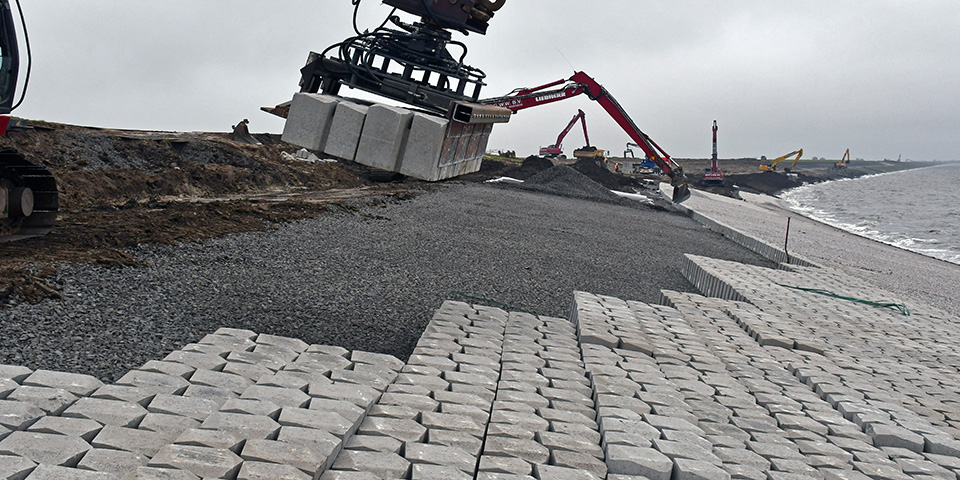
Work at Kornwerderzand, May 2019.
As much as 32 kilometers of reinforcement on the Wadden Sea side
Among other things, new revetment materials are being used to reinforce the dike. Mollet mentions the Levvel-bloc, a further development of the Xbloc, also known as Xbloc+. "This breakwater block uses 35% to 40% less concrete than traditional concrete blocks. Thanks to its unique shape, the Levvel blocks, with specially developed gripper attached to a crane, are placed roof-top. An extremely stable position is the result. A new factory in Harlingen will manufacture the Levvel blocks fully automatically. We are talking about 75,000 Levvel blocks, each weighing 6.5 tons. Each block will have an RFID chip, containing data on composition and placement. Each block is fully traceable. The supply from Harlingen to the Afsluitdijk will be by water. Sustainably and without disrupting road traffic," Kuiper concludes.
